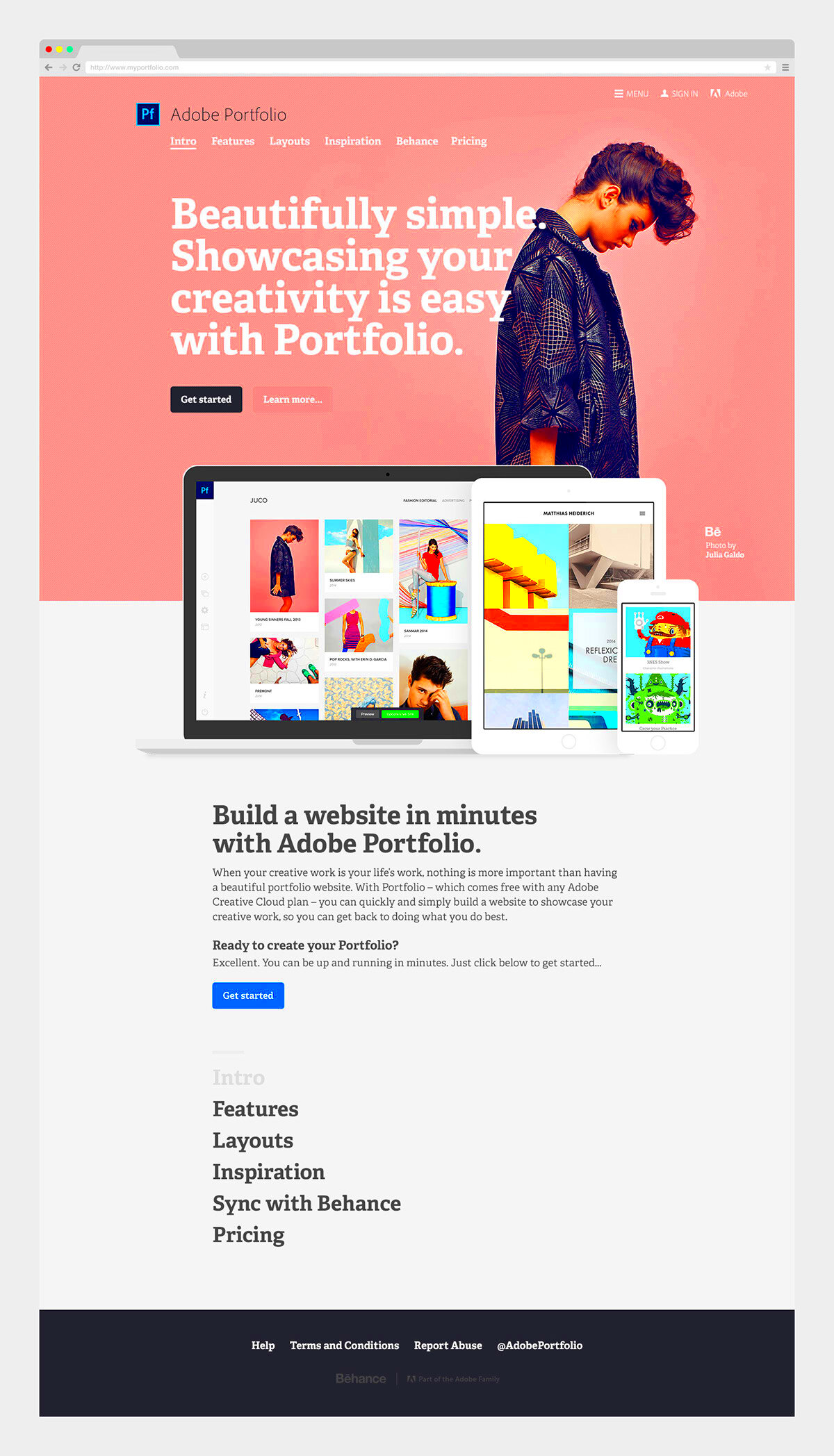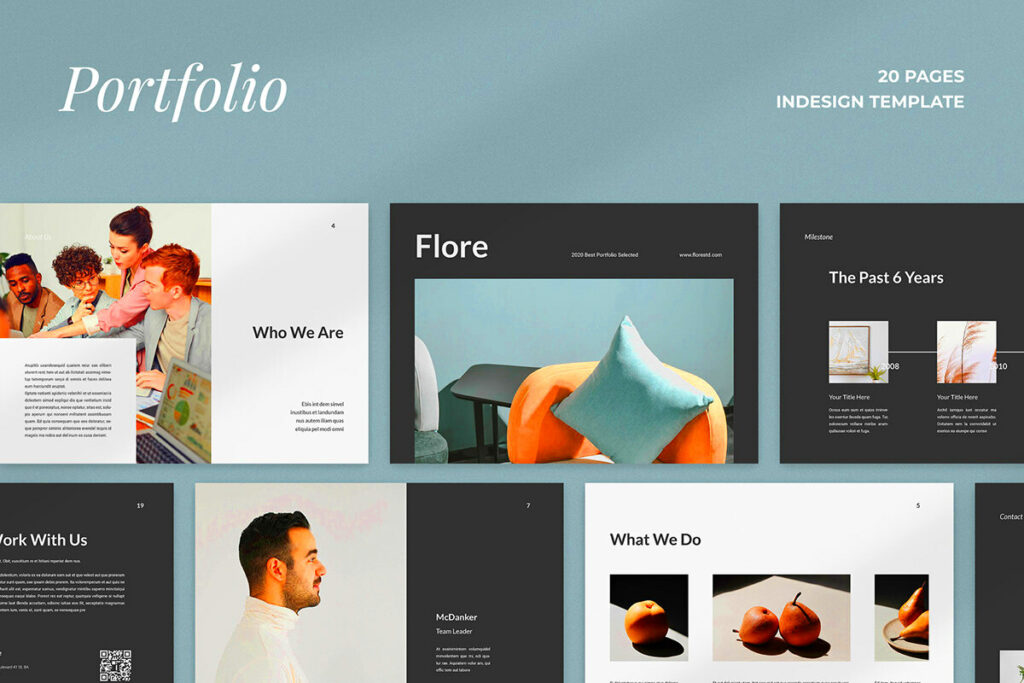Warning: Undefined array key 6 in /home/imgpanda.com/public_html/wp-content/themes/astra/template-parts/single/single-layout.php on line 176
Warning: Trying to access array offset on value of type null in /home/imgpanda.com/public_html/wp-content/themes/astra/template-parts/single/single-layout.php on line 179
Behance has become a go-to platform for creative professionals looking to showcase their work. Whether you're a graphic designer, photographer, or digital artist, Behance allows you to build a visually appealing portfolio that can be shared with potential clients or employers. It’s user-friendly and free, making it accessible to both beginners and seasoned creatives alike. This post will guide you on how to use Behance effectively to create a professional portfolio.
Why Behance is Ideal for Building Your Portfolio

Behance is designed with creative professionals in mind, and that's what makes it an ideal platform for building a portfolio. Here are some key reasons why Behance stands out:
- Visibility: Behance is part of Adobe's Creative Cloud, which means your work can reach a global audience.
- Networking: It's more than just a portfolio site – Behance allows you to connect with other creatives and potential clients.
- Customization: You have complete control over how your portfolio looks. You can arrange projects, add descriptions, and showcase your best work in a way that reflects your personal style.
- Client Acquisition: Many professionals use Behance to find talent, which increases your chances of getting noticed and hired.
- Integration: Behance integrates well with other Adobe tools like Photoshop and Illustrator, making it easy to upload and share your work directly from these platforms.
Also Read This: Royal Rumble 2024 Pay-Per-View Pricing and Inclusions
Steps to Create a Portfolio on Behance
Building a portfolio on Behance is simple and straightforward. Here's a step-by-step guide:
- Create an Account: Sign up for a free Behance account using your email or Adobe ID.
- Complete Your Profile: Add a profile picture, bio, and links to other social media or websites. This helps people know more about you.
- Upload Your Projects: Click on the "Create a Project" button to start adding your work. You can upload images, videos, or even text-based content.
- Organize Your Work: Arrange your projects in a visually appealing way. Ensure your best work is easily visible to visitors.
- Add Descriptions: For each project, include a brief description. This helps explain your process and the context of your work.
- Publish and Share: Once you're satisfied, publish your portfolio. Share the link on social media or directly with clients and employers.
Following these steps will help you create a professional Behance portfolio that stands out and attracts attention.
Also Read This: How to Optimize Images for SEO: Tips and Tricks
Tips for Organizing Your Behance Portfolio
Organizing your Behance portfolio effectively is crucial to make a lasting impression. A well-structured portfolio allows visitors to navigate easily and find your best work. Here are some helpful tips to organize your portfolio:
- Create Categories: Divide your work into categories, such as graphic design, photography, or illustration. This helps viewers quickly locate the type of work they're interested in.
- Use Cover Images: Select eye-catching cover images for each project. A striking cover can attract more clicks and views.
- Order Projects Strategically: Place your most impressive projects at the top. This way, they catch the viewer's attention right away.
- Keep It Updated: Regularly update your portfolio with new work and remove older pieces that no longer reflect your skills or style.
- Consider Project Length: Don’t overload your portfolio with too many projects. Quality over quantity is key. Aim for around 10-15 strong pieces that truly showcase your abilities.
By following these tips, you'll create a more organized and visually appealing Behance portfolio that highlights your talents effectively.
Also Read This: How to Sell Music on Shutterstock and Reach a Wider Audience
Showcasing Your Best Work on Behance
Your portfolio is only as strong as the work you choose to display. Showcasing your best work on Behance is essential for making an impression on potential clients and employers. Here are some strategies to effectively showcase your best work:
- Select Your Top Projects: Choose 5-10 projects that best reflect your skills and creativity. These should demonstrate a range of techniques and styles.
- Provide Context: For each project, include a brief description explaining your thought process, challenges faced, and the final outcome. This helps viewers understand your approach.
- High-Quality Images: Use high-resolution images to showcase your work. Poor-quality images can detract from the overall impression.
- Before and After: If applicable, show before and after images to highlight your skills in transforming a concept into a finished product.
- Engage with Your Audience: Respond to comments and feedback on your projects. Engaging with viewers can build relationships and increase your visibility.
By showcasing your best work effectively, you can create a portfolio that truly stands out and attracts attention.
Also Read This: VectorStock as a Designer's Secret Weapon for Unleashing Creativity
How to Gain Exposure for Your Portfolio
Gaining exposure for your Behance portfolio is crucial for attracting potential clients and opportunities. Here are some practical ways to boost your visibility:
- Share on Social Media: Promote your Behance portfolio on platforms like Instagram, Facebook, and Twitter. Use relevant hashtags to reach a broader audience.
- Join Behance Groups: Participate in groups related to your field on Behance. Engaging with other creatives can help you gain visibility.
- Network with Other Creatives: Collaborate with other artists or designers. Cross-promoting each other’s work can introduce your portfolio to new audiences.
- Submit to Curated Galleries: Behance features curated galleries that showcase outstanding work. Submitting your projects for consideration can give you extra exposure.
- Optimize Your Profile: Ensure your profile is complete with a clear bio and links to your social media. A professional profile can encourage visitors to check out your work.
By actively promoting your portfolio and connecting with others in the creative community, you can gain valuable exposure and open doors to new opportunities.
Also Read This: Software Solutions Provided by Fortiguard Downloader
Common Mistakes to Avoid in Your Behance Portfolio
Creating a portfolio on Behance is exciting, but there are common mistakes that can hinder your success. By avoiding these pitfalls, you can create a stronger portfolio that truly represents your skills and creativity. Here are some mistakes to watch out for:
- Neglecting Quality: Always prioritize quality over quantity. Uploading too many mediocre projects can dilute the impact of your best work.
- Ignoring Descriptions: Failing to include project descriptions can leave viewers confused. Explain your creative process and the goals behind each project.
- Inconsistent Branding: Make sure your portfolio reflects a cohesive style. Inconsistent branding can make it harder for viewers to understand your unique identity as a creator.
- Overloading with Projects: It’s tempting to showcase everything, but too many projects can overwhelm visitors. Focus on a select few that best showcase your abilities.
- Forgetting to Update: An outdated portfolio can give the wrong impression. Regularly update your portfolio with new projects and remove older work that no longer represents your skills.
- Not Engaging with the Community: Behance is a community-driven platform. Failing to engage with comments or connect with other users can limit your visibility.
By steering clear of these common mistakes, you can enhance your Behance portfolio and make a stronger impression on potential clients and collaborators.
Also Read This: Understanding LinkedIn Advertising Costs
FAQs about Behance Portfolio Creation
Creating a portfolio on Behance can bring up a lot of questions. Here are some frequently asked questions that can help clarify the process:
- How much does it cost to use Behance? Behance is free to use, though there are premium features available through Adobe Creative Cloud.
- Can I edit my projects after publishing? Yes, you can always edit or update your projects after they are published on your portfolio.
- How do I get feedback on my work? You can receive feedback by sharing your projects on social media, engaging with the Behance community, and encouraging comments on your projects.
- Can I customize my Behance URL? Yes, you can create a custom URL for your profile to make it easier for people to find you.
- Is it possible to download projects from Behance? You can download projects that you have uploaded, but you cannot download other users' projects unless they have provided that option.
If you have more questions, don't hesitate to explore the Behance help center or engage with the community for insights!
Conclusion: Make the Most of Your Behance Portfolio
Creating a Behance portfolio is an excellent step for any creative professional looking to showcase their work. By understanding the platform, organizing your projects well, and avoiding common mistakes, you can create a portfolio that truly represents your talents. Remember to:
- Showcase Quality Work: Focus on your best projects that reflect your unique style and skills.
- Engage with Your Audience: Respond to comments and connect with other creatives to build a supportive network.
- Keep Updating: Regularly refresh your portfolio with new work and remove outdated pieces.
Ultimately, your Behance portfolio is a living representation of your creative journey. By actively managing and promoting it, you can attract new opportunities and grow your career in the creative industry. So, dive in, get creative, and make the most of what Behance has to offer!
